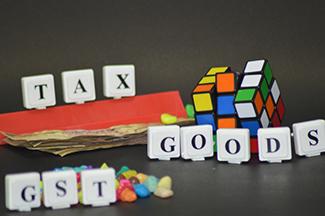The Rajya Sabha’s approval to the constitutional amendment for ushering in the Goods and Services Tax (GST) has officially set in motion the process for its implementation.
The government now aims to get the bill ratified by at least half the states as soon as possible and get the remaining laws needed to implement the one-tax regime during the winter session of Parliament. The target for implementing the GST is 1 April 2017, according to the roadmap announced by the finance ministry on Thursday.
Here’s a look at the benefits of the new indirect tax system and how it will work in practice:
How will the GST benefit business, government and the consumer?
Not only will the new system be completely online, a single tax rate across the country will substantially improve the ease of doing business. Barring some minor taxes, taxation will become location-agnostic. To be sure though, liquor and petroleum are, for now, outside the ambit of the GST.
The GST will largely free taxation from the scourge of cascading and also help pare transaction costs, thereby helping manufacturers. On the other hand, the GST will help governments administer taxation better and more efficiently. Although, to begin with, services could become costlier, consumers would benefit over time, as several hidden taxes and other inefficiencies are weeded out.
Which taxes will be subsumed within the GST?
According to a set of frequently asked wuestions, put up by the finance ministry, the following indirect taxes will be subsumed within the new tax regime:
At the central level, the following taxes are being subsumed:
a. Central Excise Duty,
b. Additional Excise Duty,
c. Service Tax,
d. Additional Customs Duty, commonly known as Countervailing Duty, and
e. Special Additional Duty of Customs.
At the state level, the following taxes are being subsumed:
a. Value-Added Tax/Sales Tax,
b. Entertainment Tax (other than the tax levied by the local bodies), Central Sales Tax (levied by the Centre and collected by the states),
c. Octroi and Entry Tax,
d. Purchase Tax,
e. Luxury Tax, and
f. Taxes on lottery, betting and gambling.
Who will levy the tax - the Centre or states?
India is a quasi-federal polity, with the states having significant autonomy in matters of finance. In keeping with the country’s federalist structure, the GST will have two components- a Central GST (CGST) and a State GST (SGST). Both the Centre and individual states will simultaneously levy the tax. A system of tax credits will be instituted to manage the system at the government level. Moreover, for inter-state transactions, the Inter-state GST (IGST) will be levied by the Centre via the system of tax credits. The IGST will also be levied on all imports into India, and those states that consume the good or service in question, will get a share from the IGST levied on imports.
Will businesses paying VAT or Central Excise Tax again have to register for the GST?
No, existing dealers will not have to register again. New dealers will have to file a single application. Moreover, dealers will now have to file just one common return for the GST, as all central and state taxes will be subsumed within it.
How will the IT infrastructure to implement the GST be managed?
The IT framework for implementing the GST is being put in place. A non-profit company called the Goods and Services Tax Network (GSTN) has been setup by the Centre and the states. The GSTN will manage all the front-end and the back-end services. Separately, the Reserve Bank of India, banks and other accounting services are also setting up infrastructure for the same.
Will some states lose out and some others gain?
To begin with, yes. Since the GST is a destination-based taxation system, consuming states stand to benefit and manufacturing states will tend to lose revenue. However, the Centre has promised the latter that it will make good all revenue losses for the first five years.
How will disputes between the Centre and states be resolved?
This was one of the most contentious issues holding up the passage of the legislation on the GST. A committee on dispute resolution is likely to be set up to manage issues between the Centre and states. Eventually, a mechanism on dispute resolution will be finalised by a future GST Council comprising union and state finance ministers.
What is the next big hurdle that the GST has to cross?
The actual tax rate is yet to be decided. The final rate could be between 17% and 19%, but there is nothing concrete yet. The Congress and other opposition parties are gunning for lower rates, saying higher rates of taxation would burden consumers. In fact, the opposition parties want that the issue of GST rates should be voted on by both houses of the Parliament. They are, therefore, pushing the government that future legislation on the GST be brought in as a Finance Bill and not a Money Bill, on which only the Lok Sabha votes and the Rajya Sabha (where the government is in a minority) can only make recommendations.
Like this report? Sign up for our daily newsletter to get our top reports.





